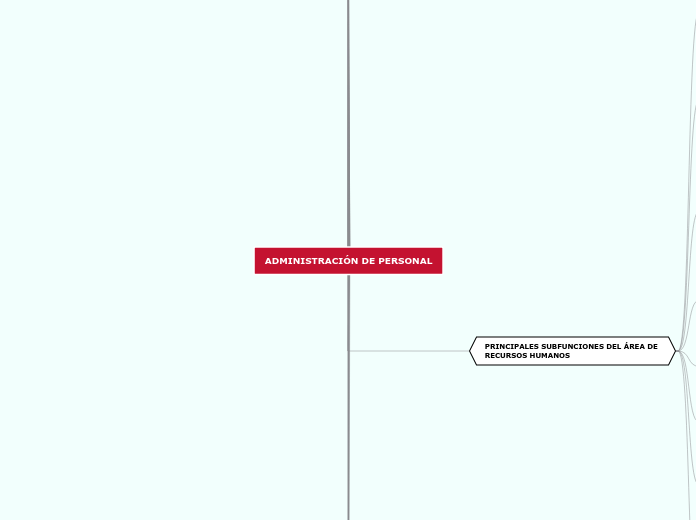par Nathaly Cardona Il y a 5 années
270
ADMINISTRACIÓN DE PERSONAL

par Nathaly Cardona Il y a 5 années
270

Plus de détails

To name your story, you have to think about the overall message and what you want your audience to understand from the story. Also, make it relevant and easy to remember.
el capital humano se entiende como todo aquellos factores poseídos por los individuos cuyo ejercicio facilita la obtención de la misión individual
el inventario quedara incluido dentro del capital humano dela empresa, cada persona es un capitalista.
esta herramienta permite conocer las experiencias, habilidades, conocimientos, intereses, actualización en el trabajo.
mano de obra
requerimientos
base de planeacion de divide en dos grupos
fuentes internar
fuentes externas
la organización espera que el empleado obedezca y a su vez el empleado espera que la organización obre con justicia
el psicólogo
la organización y el individuo esperan ganar con la nueva relación
formal y escrito
se establecer el cargo que va a ser ocupado
la organizacion realiza ciertas cosas por y para el trabajador
desarrollo
comprende al hombre en toda formación de la personalidad
adiestramiento
proporcionar destrezas en una habilidad requerida
capacitación
adquisición de conocimientos
tipos de servicios:
complementarios
recreativos
asistenciales
control de asistencia
establecer horarios
compensaciones suplementarias
proveer incentivos monetarios adicionales
calificación de méritos
evaluar mediante medios objetivos la actuación de cada trabajador
determinación de salarios
asignar valores monetarios
asignacion de funciones
asignar a cada trabajador un puesto claro
vencimiento de contratos
realizar de forma conveniente tanto para el trabajador como para la organizacion
integración
dar los trabajadores los puestos que mejor les convengan
inducción
dar la información necesria
selección
analizar habilidades de los solicitantes
reclutamiento
buscar y atraer solicitantes
The ending of a story is essential. We all know that if the ending is weak, what happened before loses its importance. So make it unpredictable, but fair. A resolved ending answers all the questions and ties up any loose threads from the plot.
This is the closure section of the story.
See examples of possible outcomes below:
Try answering these questions in order for you to come up with a closure:
- Have all problems been solved?
- Is it clear what happens with all your characters in the story?
- Has the challenged transformed your main character?
- How do the characters feel in the end?
Try answering these questions to come up with a closure:
- Have all the problems been solved?
- Is there a clear picture of what happens with each character in the story?
- Has the challenge transformed your main character?
- How do the characters feel in the end?
This is the moment when the main character surpasses the last obstacle and finally faces their greatest challenge.
The climax usually follows one of these patterns:
Type in your answer.
The middle of the story is where you add layers of complications that will lead to the end. Reveal more about the character's journey. Did their personality go through changes? How did they overcome the challenges? And as you build up the story’s central conflict, make it more personal to that character. Also, from the middle act, you have to lead into the final act.
Each story has a main character and that character usually needs to solve a problem or challenge. The character's challenge is the one that creates tension throughout the story.
In the beginning of the story (or the exposition), you will need to introduce the setting and characters. You might also want to introduce the main conflict. This part of the story is important because it gives the reader necessary background information and maybe even a first insight into a character’s personality.
The setting (time & place) of a story can change throughout the plot.
Sensory details include sight, sound, touch, smell, and taste. These details are important because they create depth in your setting.
See a few examples below:
Characters are essential to a good story. Usually, the protagonist(s) is/are the most affected by the plot. Introduce a character by focusing on their actions, interests, and occupation, as the physical appearance doesn't make a difference in most cases.
coordinación, dirección, el mejor empleo de recursos humanos que intervienen en el trabajo
Which traits best describe the character's personality? Choose more if necessary:
Type in the name of your character.
conceptos relativos a sueldos, prestaciones. contrataciones
Choose the type of your chacter: